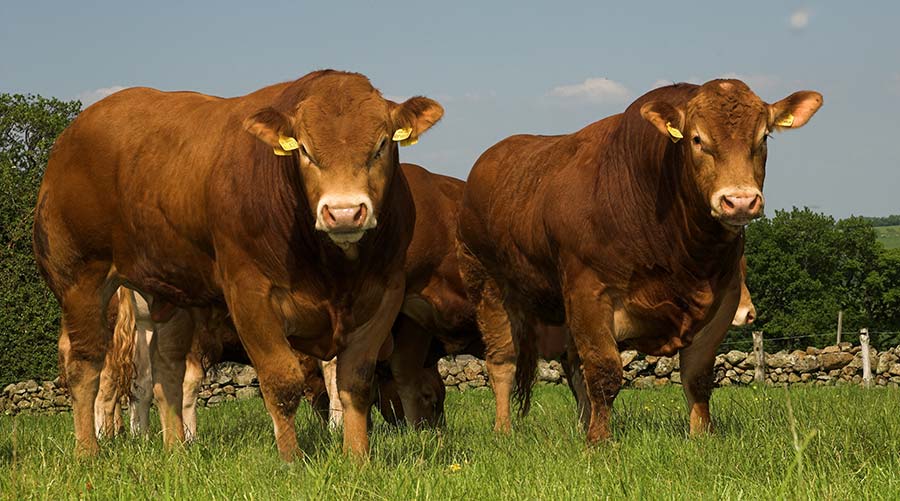Feed Efficiency EBV available for Limousin breeders
 © Wayne Hutchinson/Flpa/imageBROKER/Shutterstock
© Wayne Hutchinson/Flpa/imageBROKER/Shutterstock A breeding value for feed efficiency will be available for 100 Limousin sires within the next month, which could help improve farm profits and reduce greenhouse gas emissions.
The four-and-a-half-year long AHDB and Defra-funded Beef Feed Efficiency Programme has been able to demonstrate the ability to measure and select for feed intake in Limousin cattle.
It is thought that by selecting for feed efficiency, farmers will be able to improve farm profit by around 39% and reduce greenhouse gases by around 22%.
Professor Mike Coffey from SRUC said the prize for feed efficiency was “enormous”.
See also: Selecting for feed efficiency could raise beef profits 39%
He said: “There can be a 30% difference in feed efficiency for the best and worst animals for the same growth. On top of that, feed accounts for 60-70% of the cost of producing an animal. That’s why the prize is so big.”
The study on four farms across the UK involved monitoring individual daily feed intake in Limousin-sired beef cattle.
The cattle were bought-in as stores. Feed intakes were assessed for 63 days and cattle were fed the same diet – with forage making up 75%.
Special feed troughs featuring EID sensors and weighing scales allowed measurements to be taken of the amount each individual animal eats throughout the day.
Cattle were weighed at the start of the trial and then weekly throughout. They were bedded on sawdust to prevent them eating any straw.
They were also scanned for muscle depth and fat cover at the start and the end of the trial.
More than 2,500 animals have been recorded to date. From the limited number of animals, they have been able to produce an SNP key from the reference population.
This can be used to produce GEBVs (genomic estimated breeding values) for all other genotyped animals.
Limousins were used as the reference population because of the high volume of Limousin-sired cattle in the UK.
